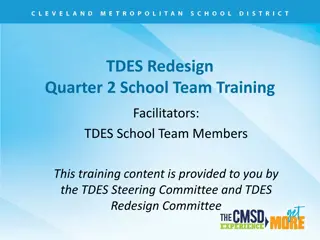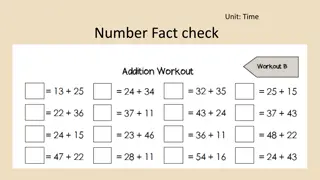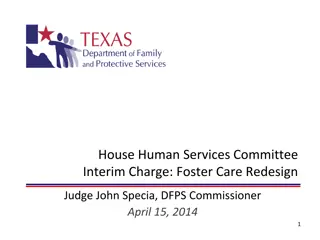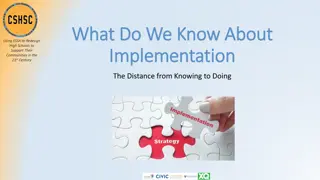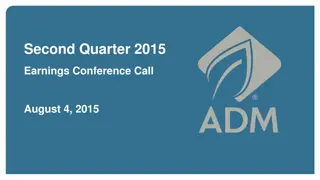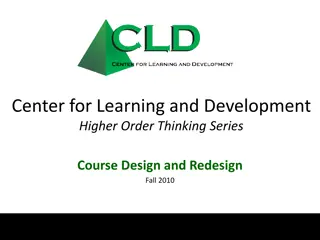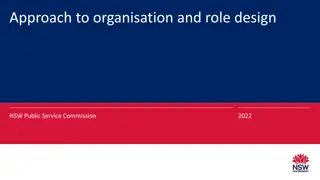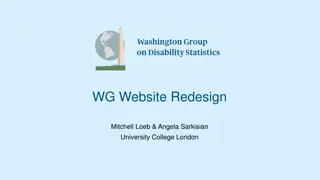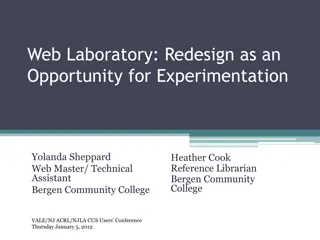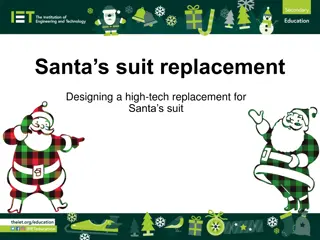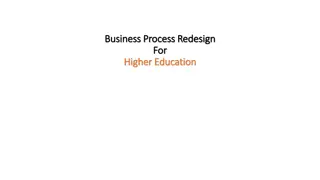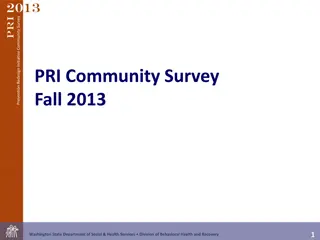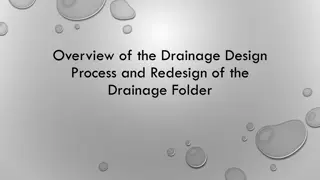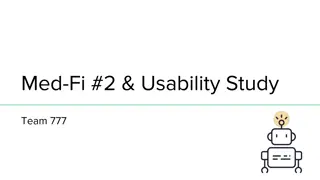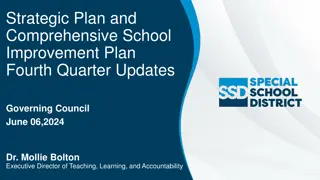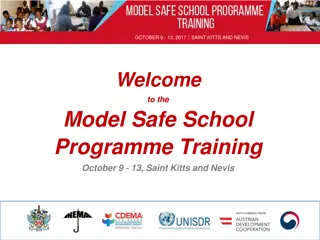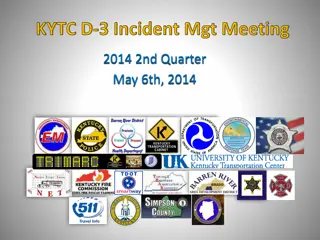TDES Redesign Quarter 1 School Training Overview
In this training session facilitated for TDES School Team Members, participants will delve into the changes in the TDES system and rubric, understand HQSD evidence, PGP/PIP processes, and FAO procedures. The session also covers the changes to Article 13 of the CBA. Materials needed include the TDES Guidebook, Teacher Rubric, and Events Calendar. Updates to TDES 2019-2020 emphasize evaluation based on the professional practice rubric and evidence of student learning. The overview of the TDES process for 2019-2020 details evaluation frequencies and professional growth plans for accomplished and skilled professionals.
Download Presentation

Please find below an Image/Link to download the presentation.
The content on the website is provided AS IS for your information and personal use only. It may not be sold, licensed, or shared on other websites without obtaining consent from the author. Download presentation by click this link. If you encounter any issues during the download, it is possible that the publisher has removed the file from their server.
E N D
Presentation Transcript
TDES Redesign Quarter 1 School Training Facilitators: TDES School Team Members This training content is provided to you by the TDES Steering Committee and TDES Redesign Committee
Agenda Introduction Teacher Development and Evaluation System (TDES) Description and Overview TDES Rubric & HQSD PGP/PIP FAO Process & Dates Article 13 Changes Wrap Up & Next Steps
Objectives: Today we will.. Understand the changes in the TDES system and rubric and how to access resources and support Identify HQSD evidence and the rubric changes Understand the PGP/PIP Process Identify the FAO procedures and timeline Identify the changes to Article 13, TDES, of the CBA
Materials Needed TDES Guidebook, 2019-2020* TDES Teacher Rubric, 2019-2020* TDES Events Calendar, 2021-2022 You may access these materials and other helpful resources on the TDES website under the Staff Tab. * 2019-2020 is the last agreed upon version of these documents which is why they have a previous year listed with them. These are the correct documents to use.
Updates to TDES 2019-2020 100% Requires evaluation based 100% on professional practice rubric Eliminates student growth component Rubric describes high-quality teaching practice Evidence of student learning using high-quality data required 7
Overview of TDES Process 2019-2020 (Accomplished and Skilled) Events One formal announced observation One unannounced observation One walk-through Evaluation Frequency Accomplished: evaluated every 3 years Skilled: evaluated every other year Off Year Growth plan check-in Conference Professional Growth Plans Accomplished professionals will write a self-directed growth plan Skilled professionals will write a jointly developed growth plan with their evaluator or principal 8
Overview of TDES Process 2019-2020 (Developing and Ineffective) Events One formal announced observation One unannounced observation One walk-through Ineffective: Additional walk-through Evaluation Frequency Every year Improvement and Growth Plans Developing: Professional Growth Plan Ineffective: Professional Improvement Plan 9
Culture Shift Updates to TDES signal a culture shift: Use data to inform instruction and improve practice Designed for time to focus on development and professional practice
TDES Rubric Domain 1: Planning and Preparation Domain 2: The Classroom Environment Danielson Framework for Teaching Domain 3: Instruction Domain 4: Professional Responsibilities 13
TDES Professional Practice Rubric 1b: Demonstrating knowledge of students 1c: Setting instructional outcomes UPDATE: a greater focus on evidence of student learning using student data 1f: Designing student assessment 3d: Using assessment in instruction 14
Component Ineffective Developing Skilled Accomplished Teacher demonstrates little or no knowledge of students backgrounds, cultures, skills, language proficiency, interests, and special needs, and does not seek such understanding. Teacher does not draw upon sources of high- quality student learning data. Teacher indicates the importance of understanding students backgrounds, cultures, skills, language proficiency and special needs and attains this knowledge for the class as a whole, using one method of information gathering. Teacher draws upon an analysis of a single source of high- quality student data. Teacher actively seeks knowledge of students backgrounds, cultures, skills, language proficiency, interests, and special needs, and attains this knowledge for groups of students. Teacher draws upon an accurate analysis on multiple sources of high- quality student data for groups of students. Teacher actively seeks knowledge of students backgrounds, cultures, skills, language proficiency, interests, and special needs, and attains this knowledge for individual students. Teacher draws upon an accurate analysis of purposefully chosen and appropriate sources of high- quality student data for individual students. 1b: Demonstrating knowledge of students
Component Ineffective Developing Skilled Accomplished 1c: Setting instructional outcomes Instructional outcomes are too general, and /or do not reflect the Ohio standards, are unsuitable for students, represent trivial or low-level learning using no sources of high-quality student data, or are stated only as activities. Outcomes do not permit viable methods of assessment. Instructional outcomes are of moderate rigor and are suitable for some students, but consist of a combination of activities and goals, using a single source of high- quality student learning data, some of which permit viable methods of assessment. Outcomes reflect more than one type of learning, but teacher makes no attempt at coordination or integration. Instructional outcomes are stated as goals reflecting level learning and curriculum standards that align with the Ohio standards, using multiple sources of high-quality student learning data. Outcomes are suitable for most students in the class, represent different types of learning and are capable of assessment. The outcomes reflect opportunities for coordination Instructional outcomes are stated as challenging goals that can be assessed, reflecting rigorous learning and Ohio curriculum standards, using multiple sources of high-quality student learning data. Outcomes represent different types of content, offer opportunities for both coordination and integration, and take account of the needs of individual students. high-
Component Ineffective Developing Skilled Accomplished 1f: Designing student assessment Teacher s plan for student assessment is fully aligned with the instructional outcomes, with clear criteria and standards that show evidence of student contribution to their development. Assessment methodologies may have been adapted for individuals, and the teacher intends to use multiple sources of high-quality student data to identify student strength and areas for growth to plan future instruction for individual students. Teacher s plan for student assessment is partially aligned with the instructional outcomes, reflects limited analysis of student data, without clear criteria, and inappropriate for at least some students. Teacher intends to use multiple sources of high-quality student data to plan for future instruction for the class as a whole. Teacher s plan for student assessment is aligned with the instructional outcomes, using clear criteria, is appropriate to the needs of students. Teacher intends to use multiple sources of high- quality student data to plan for future instruction for groups of students. Teacher s plan for assessing student learning is either absent, contains no clear criteria or standards, is poorly aligned with the instructional outcomes, or is inappropriate to many students. Multiple sources of high-quality student data are not used in planning.
Component Ineffective Developing Skilled Accomplished 3d: Using assessment in instruction The teacher uses aligned formative or summative (formal or informal) assessment(s) to check for understanding for individual students. There is self- assessment by students and monitoring of progress by both students and teachers. High- quality, actionable feedback is given to students from a variety of sources. The teacher does not use appropriate formative or summative (formal or informal) assessment(s) to check for understanding. There is no monitoring of progress by teacher or student. Feedback is not given to students. The teacher uses aligned formative or summative (formal or informal) assessment(s) to check for understanding for the whole class. There is limited monitoring of progress of learning by teacher and/or students. Feedback to students is inconsistent. The teacher uses aligned formative or summative (formal or informal) assessment(s) to check for understanding for subgroups of students. There is monitoring of progress of learning by teacher and/or student. Consistent, actionable, high- quality feedback is given to students.
HQSD Evidence Components of high-quality assessments: Measure what they are intended to measure Align to grade-level and content subject standards Provide data that can be used to inform instruction Are accessible to the majority of students Provide timely results Accurately and fairly measure student growth or progress over time Source: TDES Guidebook 2019-2020, page 10
Component Skilled Description Sample Sources of Evidence 1b: Demonstrating knowledge of students Teacher actively seeks knowledge of students backgrounds, cultures, skills, language proficiency, interests, and special needs, and attains this knowledge for groups of students. Teacher draws upon an accurate analysis on multiple sources of high-quality student data for groups of students. Survey data to get to know student s family and background Analysis of previous year OST /EOC data Analyzing students strengths/weakness from benchmark assessments such as NWEA Examining students language proficiency from OELPA data and/or student artifacts Reviewing a student s IEP A conference discussion where the teacher reflects on their knowledge of students & how she/he obtained this information Source: TDES Guidebook, 2019
Component Skilled Description Sample Sources of Evidence 1c: Setting instructional outcomes Instructional outcomes are stated as goals reflecting high-level learning and curriculum standards that align with the Ohio standards, using multiple sources of high-quality student learning data. Outcomes are suitable for most students in the class, represent different types of learning and are capable of assessment. The outcomes reflect opportunities for coordination Lesson plan outlines goals aligned to curriculum/standards and based on analysis of student data A conference discussion on how goals were determined & based on what data Source: TDES Guidebook, 2019
Component Skilled Description Sample Sources of Evidence 1f: Designing student assessment Lesson plan describes plan for assessment and includes multiple sources from formative/summative assessments A conference discussion where the teacher shares his or her plan for assessment and how to adapt assessment methodology for individual students A conference discussion where the teacher shares his or her plan for future instruction based on student data Teacher s plan for student assessment is aligned with the instructional outcomes, using clear criteria, is appropriate to the needs of students. Teacher intends to use multiple sources of high- quality student data to plan for future instruction for groups of students. Source: TDES Guidebook, 2019
Component Skilled Description Sample Sources of Evidence 3d: Using assessment in instruction The teacher uses aligned formative or summative (formal or informal) assessment(s) to check for understanding for subgroups of students. There is monitoring of progress of learning by teacher and/or student. Consistent, actionable, high-quality feedback is given to students. Observes administration of formative or summative assessment such as quizzes, projects, benchmark assessments Observes feedback provided to students such as after students present from a performance-based assessment Observes teacher or peer feedback provided to students Source: TDES Guidebook, 2019
Menu of Sources of HQSD Assessment Types Assessment Names OST/EOC NAEP OELPA/PS AASCD SAT AP KRA Splash NWEA PSAT aimswebPlus ASQ/ASQ-SE State PE Test Preschool ELA Grade K Diagnostics CoGat WebXam WorkKeys Childhood Outcomes Summary Formal Formative/Summative Assessments Student work samples Projects Curriculum based assessments Labs Teacher made tests/quizzes Performance based assessments Anecdotal notes/observations Informal Formative/Summative Assessments Source: TDES Guidebook, 2019
TDES Overview & HQSD Discussion Small group discussion: What are three things you learned about TDES Redesign and HQSD? Be sure to cite evidence from the materials, not opinions.
TDES HQSD Takeaways Provide HQSD data and data analysis for TDES events in the portal to inform instruction for students Use of a formative or summative assessment in the TDES observed lesson aligned to outcomes that checks for students learning
Professional Growth Plan (PGP) & Professional Improvement Plan (PIP)
Growth Plans Growth plans are completed annually by teachers and RSPs rated Accomplished, Skilled, or Developing (whether the professional is being evaluated or not) The Growth Plan is completed in the TDES Portal Paraprofessionals/Sign Language Interpreters/MLT/TOAs do not complete Growth Plans Note: Teachers/RSPs rated Ineffective will have an evaluator created an improvement plan
Growth Plans During Evaluative Years Accomplished, Skilled, and Developing Ineffective
PGP Dates PGP Section of Portal set to open by September 6 PGP/IP Due: September 24 (all schools/RSPs) PGP Check in: Quarter 2 or 3 (October 25 - March 18) PGP Conference: Quarter 2 or 3 (see dates above)
Formal Announced Observation (1 of 2) 1. Evaluator and professional collaboratively agree upon the FAO dates for the observation, pre-and post- conferences 2. Teacher submits lesson plan through the portal prior to the pre-conference 3. Teacher and evaluator hold a pre-conference to discuss the lesson plan 4. Evaluator observes lesson for at least 30 minutes 5. Evaluator submits evidence within 24 hours of the event; teacher can submit evidence within 24-48 hours after receiving evaluator evidence.
Formal Announced Observation (2 of 2) 6. When adding evidence, both the evaluator and professional should clearly label any attachments with a specific component Teacher self-assesses on the rubric Evaluator marks areas of agreement on the rubric and shares with the teacher Teacher and evaluator meet for the post- conference to discuss areas not agreed upon and complete the rubric All must occur within 10 working days from pre-conference to post-conference. 7. 8. 9.
Formal Announced Observation If the FAO does not occur when scheduled, the originally submitted TDES lesson plan and evidence in the portal will be used for Domain 1 evidence. A mutually agreed upon date and time will be rescheduled for the observation and post-conference to capture Domain 2, 3, and 4 evidence. If a teacher is rated Ineffective, they will have a walkthrough prior to their FAO.
Formal Announced Observation Timeline The complete FAO process (pre-conference, FAO, and post-conference) need to be completed within 10 days All Formal Announced Observations need to be completed prior to December 17. Build a schedule with collaboratively agreed upon dates to insure completion prior to the deadline
Appeals A professional can file an appeal on their FAO within ten (10) working days of the post-conference. The appeal is emailed to the Network Leader and the Evaluator is copied. Note any procedural errors and/or specific components you are asking to be reviewed. Evidence in the portal pertaining to this event is considered. The Network Leader has ten (10) working days to respond to the professional and copy the evaluator & TDES Co-Chairs. If not resolved, the professional can forward the appeal to the TDES Co-Chairs at TDES@clevelandmetroschools.org The TDES Co-Chairs have ten (10) working days to respond to the professional, evaluator and Network Leader.
FAO True or False Sample Statement True or False 1. The FAO pre-conference, observation, and post-conference need to occur within 10 working days True 2. The evaluator can determine the date and time of the observation. False 3. The professional completes the TDES lesson plan in the portal prior to the pre-conference True 4. The professional has 10 days to file an appeal after a post- conference. True 5. The professional self-assess on the rubric about the lesson at post-conference False 6. The evaluator marks areas of agreement on the rubric about the lesson prior to the post-conference. True 7. The professional can upload evidence from the lesson a week after they receive evidence from the evaluator. False
Article & Section Topic Language Change Article 13, Section 1, J Appeal Process The teacher will submit the appeal to the Network Leader with a copy to the evaluator. The Network Leader shall submit an electronic record of the request, his/her response, and the outcome of the appeal within ten (10) working days, with a copy to the teacher, evaluator and TDES Co-Chairs. The teacher may appeal the Network Leader s response to the TDES Steering Committee Co- Chairs within ten (10) working days. The TDES Steering Committee Co-Chairs will respond with ten (10) working days, with a copy to the teacher, evaluator and Network Leader.
Article & Section Topic Language Change Article 13, Section 1, K, 3 Incomplete Evaluation Rating If a compressed evaluation schedule is not possible, the teacher will be assigned the higher of his/her rolling average of the last three (3) year composite evaluations rankings for the Teacher Performance Data (rounded to nearest whole, and based on a numerical equivalent of 1 point for Ineffective , 2 points for Developing , 3 points for Skilled and 4 points for Accomplished (This is only completed by the TDES Co-Chairs)
Article & Section Topic Language Change Article 13, Section 1, K, 5 Leave of Absence Where a member has applied for and is eligible for a leave of absence and is in active pay status, and does not have a completed evaluation, one of the following three rating designations will be assigned: a. The member will retain their earned carry over rating if they are in a carry over year; or b. The member will retain their default rating if they are in their first default occurrence; or c. The member will be rated Skilled , if they have previously defaulted to a past rating.
Article & Section Topic Language Change Article 13, Section 1, K, 6 First year limited contracted teacher If a limited contract teacher in their first year in the District has an incomplete evaluation, they will default under the policy in Article 13, Section 1, (K) (3) and (4) above. However, if the teacher defaults to a Skilled rating, they will be subject to the full evaluation cycle in the next year. This provision only applies in the first year of employment as a limited contract teacher in the District and does not apply if their evaluation is incomplete in a subsequent year. (Only for defaults)
Article & Section Topic Language Change Article 13, Section 2, C PreK-8 One of the options for the use of the PreK-8 non-instructional tasks period identified in Article 9, Section 4(F)(3)(a) is for the completion of TDES events (growth plan/improvement plan conferences, pre- and post-conferences, and composite conferences). Non-instructional Tasks


